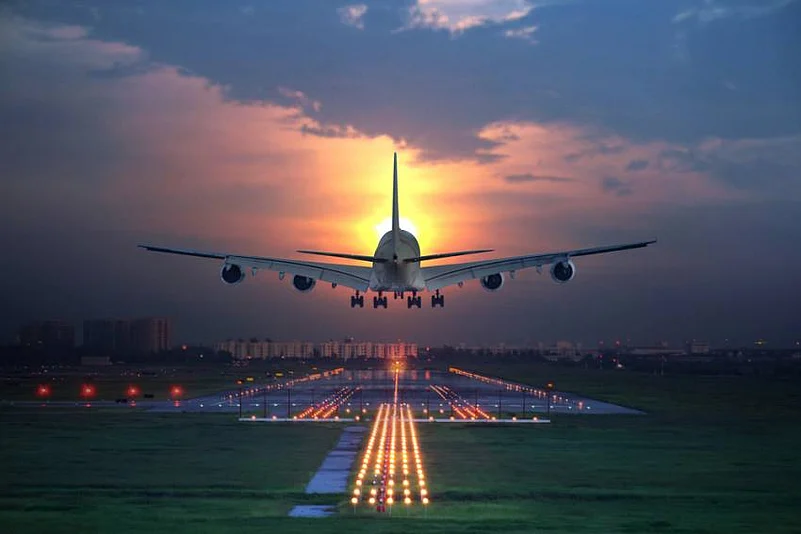Coronavirus pandemic has dealt a severe blow to the airline industry and 2020 has been the worst year in the history of the aviation industry. The International Air Transport Association (IATA) has painted a grim picture of the aviation sector. According to its report, aviation companies worldwide are expected to lose approximately USD 85 billion in 2020. The report also predicts that revenue is likely to fall from USD 838 billion to USD 419 billion, and passenger traffic will reduce to half to nearly 2.25 billion.
To rub salt in the wound, several plane crashes brought bad times for both the airline entities and its insurers. In January 2020, Iranian Islamic Revolutionary Guards shot down Ukraine’s Boeing 737-800 shortly after takeoff from Tehran Imam Khomeini International Airport. In February, Pegasus Airlines’ Boeing 737-800 skidded off the airstrip while landing at Turkey’s Istanbul-Sabiha Gökçen International Airport. In May, Pakistan’s Airbus A320 crashed in a residential area of Karachi killing at least 97 people.
The most recent accident was in August this year in Kozhikode. An Air India Express aircraft skidded off the tabletop runway, fell into a valley and split into two. Till now, at least 21 people have died in the accident.
For the Kozhikode crash, along with the public sector insurance conglomerate which reinsured the risk overseas, global reinsurers will have to reimburse more than 90 per cent of the insured value of the star-crossed plane that was damaged. Many insurance partakers sense that premiums may get elevated in the next fiscal year due to the increase in calamities. This is a grave concern for the half-dead airline industry.
Sophisticated technical operations of an airplane and resulting risks have exposed the aviation industry to a chain of slowdowns. This has cemented the way to aviation insurance. Aviation insurance is a dedicated insurance which has been framed to offer coverage to the precise operations of an aircraft and other conceivable jeopardies in aviation. Although aviation insurance was first introduced in the early years of the 20th century, the concept gained thrush only recently. Numerous aircraft tragedies have not only encouraged more people to buy aviation insurance, but it has also amplified the number of claims by a gigantic margin. The clauses, terms, limits in aviation insurance are exceptionally inimitable. The nature of coverage and the amount of premium hinge on the type of aircraft that is being covered by the policy. Aircraft insurance provides protection against a wide range of perils and shelter repairs to spoiled airplanes or other flying machines. Across-the-board coverage may also include impairment caused to airports, hangars, and other relevant land-based property.
Though the claim process for aviation insurance is quick and hassle-free, a number of documents such as aircraft details document, flight details document, details of the crew members, documented proof of the accident, information on aircraft’s maintenance and engineering and documents of operational manual passengers have to be submitted for the settlement.
Airline Industry Not On Cloud Nine
According to a survey in London, because of the pandemic, the aviation segment holds the biggest risk of corporate default. Moreover, as a major portion of the operating costs—aircraft leasing, maintenance and fuel overheads—are paid in US dollars, Indian airlines are twisting and turning at a time when rupee has devalued by approximately six per cent since January 2020.
To make the scene worse, the burden of insurance premium is mounted. Insurance industry suffered insured loss of 130 billion US dollars because of severe hurricanes, wildfires and other natural adversities in 2017. They thought that aviation books are not burnt by these events and decided to tighten the rules. Insurance premiums were increased when contracts came up for renewal and renegotiation.
According to the report of insurance industry officials, because of weak cash flows, many airlines have necessitated policy renewals and new policy purchases postponed by three months to twelve months. They have also demanded waiver on renewal of insurance policies and 30 to 40 per cent lower premiums. They are also looking to improve terms and conditions with their insurers as well. On the other hand, during the financial year 2019-20, the premium from sales of new pure aviation policies stood at approximately Rs.687 crore, which was roughly 24 per cent higher than about Rs 556 crore collected by the insurers in the previous financial year.
These higher insurance costs came at a time when loss ratios were increasing, leading to a lack of profits. Many insurers have stiffened underwriting strategies and are now refusing risks they would have quoted in the past. Large number of aircraft owners will find that there is less elasticity on recurrent-training necessities, more unwillingness to over-insure hull values and offer high liability edges, and less attention from underwriters when there is any loss history on an account.
Five years ago, in 2015, the Directorate General of Civil Aviation made it compulsory for pilots to undertake psychiatric tests before takeoff as any failure to pass the test could lead to cancellation of flights and claims. This has increased the burden for the airline industry already confronting greater cost of insurance after a Malaysian Airlines flight disappeared over South China Sea.
Take the example of Air India’s largest insurance claim. Having approximately 170 aircraft in its kitty, Air India has adequately been covered by insurance policy that includes aircraft or hull and liability for third party and passengers. Due to complete damage of Flight IX-1344, Air India hopes to recover the entire insured amount. Even industry experts think the same as the plane cannot be revamped. The flight has been reinsured for Rs 375 crore and about 30 million dollars have been paid by the company while renewing the policy in April 2020.
Happy beginning of insurance claim settlement may not bring a happy ending. Because of depreciation and related notional expenditures, the ill-fated plane would be around or less than the original cost. Reinsurers will consider this along with other details relating to the disaster before resolving the claim. Furthermore, Air India may have to spit out more insurance premium when it renews the cover in future. While a small number of insurance participants believe that since the global accident tendency has been mostly steady and the crash may not increase the insurance premium burden throughout the industry, many antagonistic aspects have already doubled the Air India’s insurance renewal cost for the previous fiscal years.
To conclude, insurers should comprehend the rigorousness of the scenario and must be sympathetic towards the aviation industry. They should also understand that airlines are streamlining their fuel, staff overhead, leasing overhead and depreciation, maintenance and airport and other service provider charges by ending unprofitable operation routes, decreasing staff costs, reducing maintenance costs, etc. Taking note of their financial well-being and cash reserves insurance companies should support the airline companies. Nevertheless, airline insurers have a commitment to their shareholders to undergo stern scrutiny to abate a situation where they might face increased credit risk and debts, they should slacken few footings for the troubled and distressed industry. They may have to accept a lower expectation of fiscal year 2019-2020 premium. This will definitely bring good times.
(The writer is a tax specialist, financial adviser, guest faculty and public speaker based in Goa. Views expressed are personal.)
















